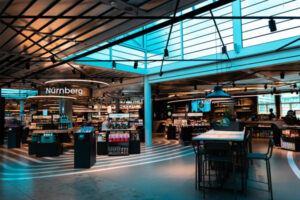By Dr. Ahmet Köse, CIO at R8 Technologies
Commercial buildings are remarkable energy consumers. HVAC (heating, ventilation, air conditioning) energy consumption accounts for 40% of a commercial building’s total energy use. HVAC operators usually communicate with the HVAC equipment through a building management system (BMS). BMS is a computer-based control system that provides a user interface (UI) through dedicated software for real-time monitoring and control purposes.
Revolutionary growth in computational power and computer science in the last few decades gave rise to artificial intelligence (AI) based solutions in various business fields such as Proptech. Arguably, machine learning (ML) is the most known type of AI that is used to solve real-world problems by allowing computers to learn from data.
Almost every large commercial building has a BMS that contains thousands of datapoints. Some of those datapoints are created by BMS providers for operators to interact with. On the other hand, BMS has limited features to let operators take care of the building’s actual needs and problems. Thus, it is a constant challenge to maintain optimal indoor climate regardless of building ecosystem and dynamics like occupancy and weather. Furthermore, it is not possible to use any AI-based solutions by default since BMS is not designed to apply data-driven methods for HVAC systems, not even to collect data for this purpose.
The sustainability goals of commercial buildings require additional smart building solutions to accomplish lower CO2 emissions while maintaining an optimal indoor climate. At the same time, those smart solutions should target to use of existing hardware, infrastructure, and tools to avoid additional costs and unnecessary investments. Eventually, what premium commercial buildings require is a reliable and intelligent software solution that has the capability to collect data continuously and use them for increasing energy efficiency. The solution should also offer an automated control for the HVAC equipment by adjusting writable datapoints in BMS.
R8 Digital Operator is the true example and has already been in use for years in several countries in Europe. The AI-based solution adjusts only writable datapoints that are available in BMS. In other words, R8 Digital Operator provides an automated mechanism with data-driven decision capabilities to assist actual operators.
HVAC experts/operators are responsible for HVAC operations in commercial buildings. Therefore, they should be able to communicate with AI-based solutions. That simply means the operators should be able to monitor, recognize and understand actions and operations made by AI through their existing working environment. Otherwise, smart solutions may result in larger costs towards complexity and conflicts than the potential benefits.
BMS is the main monitoring and control system for operators, and it should remain the same. Because operators face challenges continuously due to indoor climate complaints, mechanical failures, and other operational issues. Additional hardware-based systems or another UI to learn and use will make their work even harder. Attempting to run multiple systems in parallel for operating the HVAC equipment may also cause unexpected failures due to the lack of communication, transparency and explainability.
Advance solutions like R8 Digital Operator already allow operators today to communicate with AI by only using BMS. Operators can monitor all the values that are set for controlling HVAC equipment. In addition, if the operators are willing to do changes for HVAC equipment, R8 Digital Operator recognizes the interactions made through BMS, and the control for sub-systems will be on hold temporarily.






